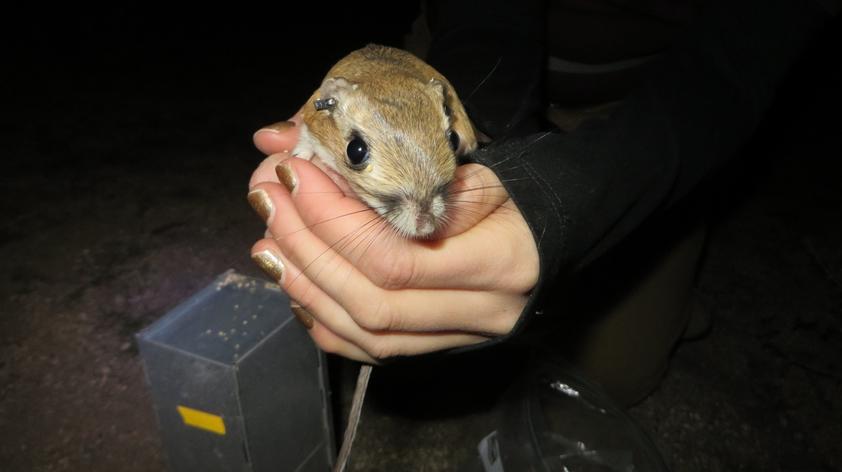
How to catch a kangaroo rat
Kangaroo rats live throughout Southern California but many residents have never heard of them, let alone seen one. This is mainly because kangaroo rats are nocturnal- they spend their days in underground burrows and come above ground at night to forage for seeds. Once you are familiar with their signs, you might notice burrow entrances or foot (and tail!) prints in sandy areas.
For the same reasons that make kangaroo rats hard to see, they are difficult to study and observe. In order to answer many conservation questions, such as their habitat use, population size and distribution, competitive relationships, and genetic structure, we must trap them.
This process involves setting out small aluminum traps in grids or lines, which we mark with a fluorescent flag and reflective tape so we can easily find it at night. We open each trap just before the sun sets and bait it with millet or some other tasty seeds. When an animal walks into a trap to get the seeds, the door closes behind it, keeping it secure until we come to check and release it.
We check all our traps at midnight, marking off on a data sheet which are open. We carefully inspect the ones that are closed- hopefully they will hold a kangaroo rat, but it may be one of the 5 or so other rodent species that share the same habitat. Sometimes they are closed by the wind, and occasionally have a bigger surprise like a night gecko or a snake!
After we remove the animal from the trap, we collect whatever data we need. We identify what species it is, assess the sex and reproductive condition, weight, and make any other notes about body condition. Depending on the study we will collect a small tissue sample for genetic analysis, mark the animal if we are conducting long term monitoring, and take a GPS location of the capture point or the burrow we watch it go into.
Once we release the animal we re-bait the trap, and repeat the process before dawn when we check and close all the traps for the day.
Becoming nocturnal to match the kangaroo rat schedule is tough, but there are always interesting things out and about at night.
After the initial creepiness wears off, it’s exciting to see a different world come to life. We’ve seen owls, bobcats, owls chasing a bobcat, spiders, scorpions, and lots of other cool things!
Next time you have an opportunity, I highly recommend taking a walk at night- you’ll be surprised at how different a familiar place is at night. If you’re lucky, maybe you’ll even see a kangaroo rat.













